
Welcome
Atithi
Dazzle Delhi
Travel Ideas
Go Beyond Luxury, Feel the Opulence

Welcome
Go Beyond Luxury, Feel the Opulence
Delhi, India’s modern capital, is an ancient city tracing its origins in legend. It is dotted with hundreds of landmarks and offers more than a millennium of history in stone. Old Delhi was founded as Shahjahanabad by Mughal Emperor Shahjahan in 1639. It remained the capital for the Mughals until the end of the Mughal dynasty. It was once filled with the mansions of nobles and members of the royal court, along with elegant mosques and gardens. Today Old Delhi still serves as the symbolic heart of metropolitan Delhi. The population of the heart of India can be tallied as 11, 17, or 28 million, depending on the exact borders one wishes to use for the count. Delhi's culture has been shaped by a strong Punjabi influence in language, dress, and cuisine, brought by the large number of refugees who entered Delhi following the partition in 1947. However, the recent migration from other parts of India has made it a melting pot of cultures from across the sub-continent.
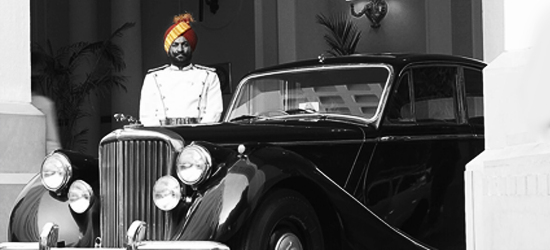
Chosen as India's best 'Luxury Historical Hotel' by World Luxury Hotel Awards 2015, The Imperial is an iconic property in Delhi's 5 star hotel category. The Imperial New Delhi was opened in 1936 as the first hotel in New Delhi. One of the Grand Dames of the East, its architecture has subtle traces of Victorian, Art Deco and Lutyens styles. White marble colonnades, verdant gardens and rooms & suites replete with Italian marble floors, polished Burma teak, Persian hand-knotted carpets, antique Chandeliers and Rosewood furniture, set the tone. The storied hotel blends rich heritage, exceptional service and modern-day comforts for today’s business and leisure travellers.
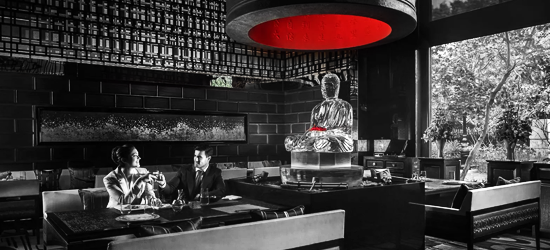
Experience unparalleled opulence with the graciousness of true Indian hospitality. Immerse yourself in a blissful escape & unwind in the magnificence of luxury. Rare Indian Art Selection. Award-winning Restaurant. Award winning hotel.
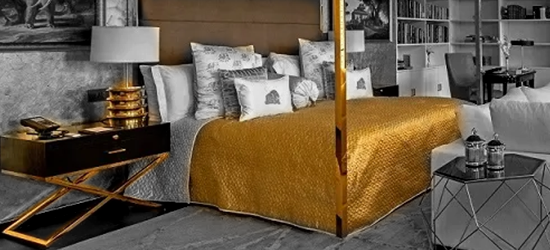
An urban oasis centrally located in New Delhi, The Lodhi is the intuitive expression of a contemporary yet stylishly confident India.
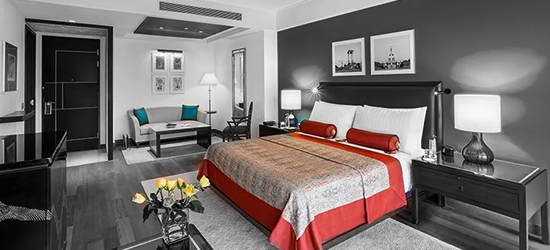
Ranked#1 City hotel in Asia, an incomparable venue for business or pleasure, The Oberoi, New Delhi, enjoys views of the UNESCO World Heritage Site of Humayun’s Tomb on one side and a calming view of the forested golf course on the other. The contemporary interpretation of Sir Edwin Lutyens' New Delhi in the interiors combines with a state of the art clean air technology offering the healthiest air in the city. Thoughtfully detailed throughout its public spaces, with superlative rooms, restaurants and guest facilities, this is a 5 star luxury hotel in Delhi perfectly conceived for work or play.
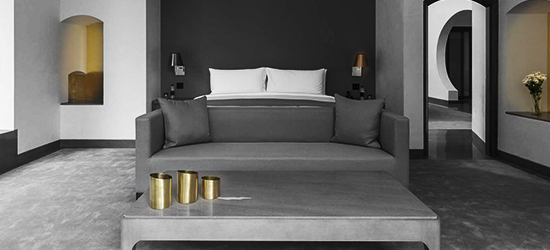
One of the top hotels in Delhi, Inspired by the five elements of Hindu philosophy – air, water, fire, earth and sky, internationally acclaimed architect Khun Lek Bunnag conceived the design of this luxury resort in Delhi. A calming sense of wellness and tranquillity transcends the very moment you enter. The exclusive design elements at the resort include intricate bronze meshwork in the guest areas, doors that rise as high as 20 feet, high dome ceilings and aristocratic Isfahan pillars fused with a five century old Moghul architecture. A staycation at The Roseate New Delhi is best described as a retreat or as a relaxing getaway at this luxury accommodation in New Delhi.
A visit to Old Delhi must include a walking tour of the Red Fort, a huge settlement that contains many very beautiful palaces and handsome public buildings. The Red Fort was the residence of the Mughal Emperor of India for over 200 years, until 1857. In addition to accommodating the emperors and their households, it was the ceremonial and political center of the Mughal government and the setting for events critically impacting the region. Constructed in 1648 by the fifth Mughal Emperor Shah Jahan as the palace of his fortified capital, the Red Fort is named for its massive enclosing walls of red sandstone.
Jamma Masjid is one of the world’s largest mosques and a graceful structure that is still a house of worship for devout Muslims. The mosque was completed in 1656 with three great gates, four towers and two 40-meter-high minarets constructed of layers of red sandstone and white marble. There are three domes on the terrace which are surrounded by the two minarets. The courtyard can accommodate more than 25,000 persons and is the fourth largest mosque in India.
Visitors to Delhi should include Raj Ghat, the cremation site of Mahatma Gandhi, the Father of Modern India. The monument is left open to the sky while an eternal flame burns perpetually at one end. A stone footpath flanked by lawns leads to the walled enclosure that houses the memorial.
Built in 1569, Humayun’s Tomb is a sandstone forerunner of the Taj Mahal, and was the first garden-tomb on the Indian subcontinent. The tomb was commissioned by Humayun's son Akbar in 1569 and designed by Mirak Mirza Ghiyas, a Persian architect. Turkish and Mughal rule in the Indian subcontinent also introduced Central Asian and Persian styles of Islamic architecture in the region and, by the late 12th century, early monuments in this style were appearing in and around Delhi.
In 1200 CE Qutub-ud-Din Aibak, the founder of the Delhi Sultanate, started construction of the Qutub Minar. Qutub Minar is surrounded by several historically significant monuments, which are historically connected with the tower and are part of the Qutub Complex. These include the Iron Pillar of Delhi, Quwwat-ul-Islam Mosque, Alai Darwaza, the Tomb of Iltutmish, Alai Minar, Ala-ud-din's Madrasa and Tomb, and the Tomb of Imam Zamin. At 73 meters high, Qutub Minar is the tallest brick minaret in the world.
The Lotus Temple is a Bahá'í House of Worship that was completed in 1986. Notable for its flowerlike shape, it serves as the Mother Temple of the Indian subcontinent and has become a prominent attraction in the city. Like all other Bahá'í Houses of Worship, the Lotus Temple is open to all, regardless of religion, or any other distinction, as emphasized in Bahá'í texts.
For those looking for a marketplace adventure, take a cycle rickshaw ride through the streets of Chandni Chowk, one of the oldest and busiest markets in Old Delhi. From authentic Indian food with delicacies and sweets of more than 1,000 kinds to sarees with chikan and zari work, there is so much to see in the variety of Chandni Chowk’s markets and their Indian heritage. There are many narrow lanes with shops selling books, clothing, shoes, leather goods, electronics, and consumer goods. The area, although very congested, is a good place for window shopping and photography.
Swaminarayan Akshardham is a Hindu temple, and spiritual-cultural campus, inspired by Yogiji Maharaj and created by Pramukh Swami Maharaj in 2005. The complex displays millennia of traditional and modern Hindu culture, spirituality, and architecture. There are various exhibition halls which provide information about the life and work of Swaminarayan.
* The Delhi Metro: has been instrumental in ushering in a new era in the sphere of mass urban transportation in India. The swanky and modern Metro system introduced comfortable, air conditioned and eco-friendly services for the first time in India and completely revolutionized the mass transportation scenario not only in the National Capital Region but the entire country.
* Heritage Walk: The city of Delhi has a long history and today, after centuries of growth, its citizens live in an environment where new elements are juxtaposed with old ones. Often centuries-old buildings and groups of buildings lie out of sight behind modern development. Sometimes new growth tends to overshadow the older areas of the city. But these areas and the communities that live in them represent the city’s history, tradition, heritage, culture, architecture and craftsmanship.
The Qutub Minar Walk in night: A new addition to night walks in Delhi is Qutub Minar. The Qutub Minar in the night is illuminated with hundreds of bulbs. The experience will be a totally different from visiting a Qutub Minar at day time. You will enjoy this romantic walk and will be a memorable experience.
Indian Home Cooking Demo with meal: Prepare yourself to dive into a world of spice-packed, flavour and fragrance rich Indian food. We're all about good recipes, and about quality home cooking that everyone can enjoy. Gives you an insight to Indian home, culture, traditions and culinary experience of home-cooked food.
* Sound & Light Show (Red Fort): Watch the recreation of 300 years of India’s history as the Red Fort, a magnificent symbol of Mughal power, is illuminated with special light effects and animated with accompanying music and narration.
* The Segway Experience: Have fun gliding through the timeless streets of Delhi and discover all its wonders on the coolest ride of the 21st century! The Segway Experience is very fun for everyone who would like to discover Delhi from a different perspective. Let us show you the most important and interesting sights. There will be an abundance of photo opportunities of historic buildings, monuments and memorials.
* Museum Tour: Just like the history and the monuments, the museums of Delhi will fascinate any visitor who is curious to know the heritage of Delhi. Delhi museums are the perfect place to know about Indian Civilization. Museums in Delhi are a showcase of the past and the present. Art lovers would certainly love the splendid display of contemporary art as well as relics and artifacts of ancient India.
* Heena application: Take back a souvenir of India. Get Mehendi (Henna) applied on your hands and bask in the compliments of friends and family.Henna is basically a natural dye that gives a cooling effect when applied on the skin and gives red color to it. It is mostly used to decorate palms and at times right to the elbows. When it dries completely, the skin or hair is washed with water to reveal the dyed color.
Asian brides are not complete until they have applied Henna on their hands and feet.
* Salaam Balaak Trust Walking tour: The Salaam Baalak Trust City Walk is an English-guided tour of almost two hours conducted by the children who used to live in the streets of Delhi before joining our Trust. The guides are adolescents who have been fully trained as local guides and who want to improve their communication and speaking skills. City Walk gets the children's stories heard and gives people a view of their world through their eyes. Led by a teenager at the Trust, the City Walk tour covers the streets of the inner city of Paharganj and the area around New Delhi Railway Station.